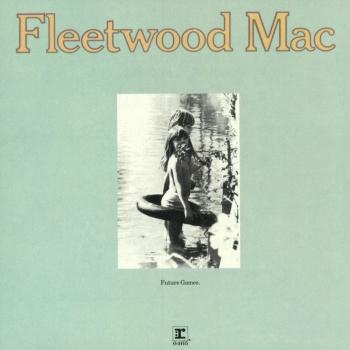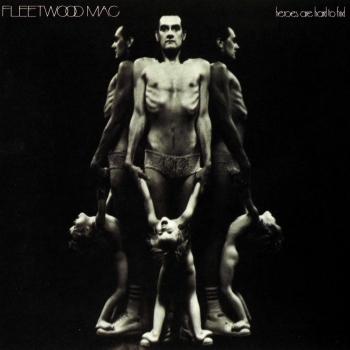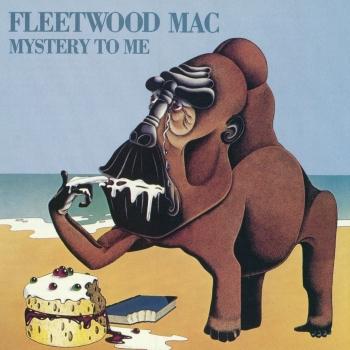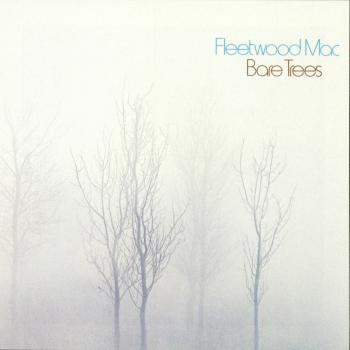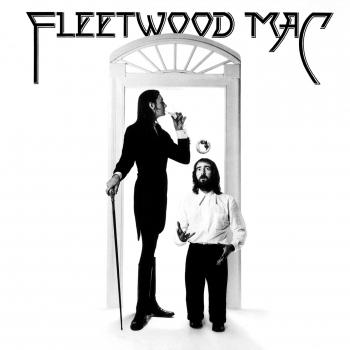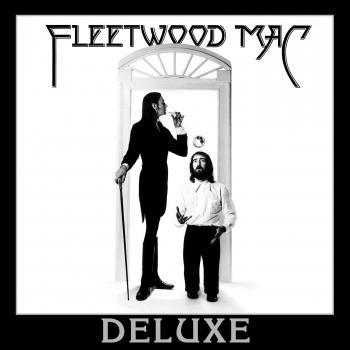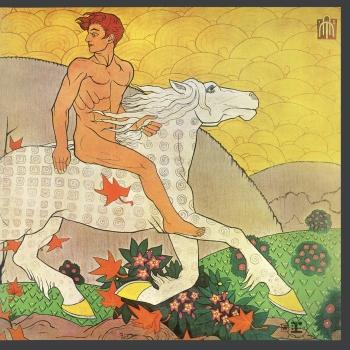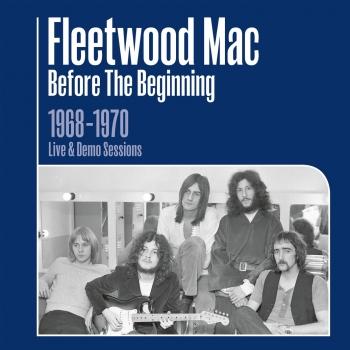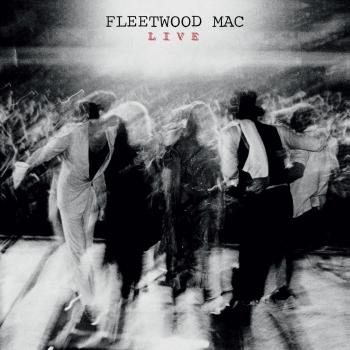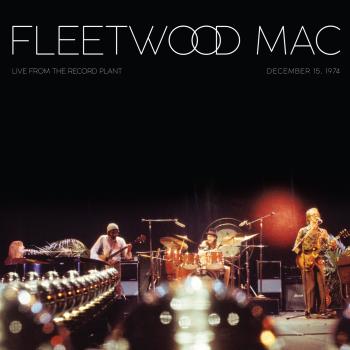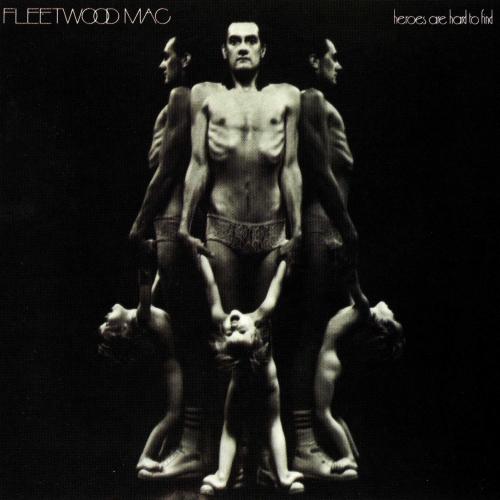
Heroes Are Hard To Find (Remastered) Fleetwood Mac
Album info
Album-Release:
1974
HRA-Release:
31.03.2017
Album including Album cover
I`m sorry!
Dear HIGHRESAUDIO Visitor,
due to territorial constraints and also different releases dates in each country you currently can`t purchase this album. We are updating our release dates twice a week. So, please feel free to check from time-to-time, if the album is available for your country.
We suggest, that you bookmark the album and use our Short List function.
Thank you for your understanding and patience.
Yours sincerely, HIGHRESAUDIO
- 1 Heroes Are Hard To Find 03:36
- 2 Coming Home 03:54
- 3 Angel 03:57
- 4 Bermuda Triangle 04:09
- 5 Come A Little Bit Closer 04:50
- 6 She's Changing Me 02:59
- 7 Bad Loser 03:26
- 8 Silver Heels 03:28
- 9 Prove Your Love 03:59
- 10 Born Enchanter 02:55
- 11 Safe Harbour 02:31
Info for Heroes Are Hard To Find (Remastered)
When Fleetwood Mac cut 1974's „Heroes Are Hard To Find“, the band had been winnowed down to a quartet. American singer-songwriter Bob Welch rounded out the British trio of John McVie, Mick Fleetwood and Christine McVie. Having just won a court battle with an old manager to keep the rights to the band's name, the Mac recorded eleven songs that took them far beyond their blues roots. Welch and Christine McVie split all the songwriting and the result was a record populated by murky songs (Welch's "Angel," and "Bermuda Triangle") with occasional shards of wry optimism shining through (the title track and "Come A Little Bit Closer," both penned by McVie).
McVie and Welch occasionally swapped places. Welch gives his normally drawling vocals a brighter, Beach Boyish tone on "She's Changing Me" and Christine McVie takes the mike for the sinister rumblings of "Bad Loser." „Heroes Are Hard To Find“ was Welch's last album with Fleetwood Mac, and the brooding style of singing and composing that he brought to the group helped redefine its sound, paving the way for Lindsey Buckingham and Stevie Nicks, who joined the Mac on their next album.
„Although this was Bob Welch's last album with the band he had worked with since 1971, it sounds like he's at his peak. Pared down to a foursome for the first and (as of 2002) only time since the addition of Danny Kirwan, both Welch and Christine McVie contribute some of their finest songs. Bolstered by sympathetic self-production and imaginative, often aggressive arrangements that include brassy horns on the title track (a blatant but failed attempt at a hit single), the album is one of their most cohesive yet diverse. Welch continues his fascination with UFOs in a sort of follow-up to Mystery to Me's "Hypnotized" called "Bermuda Triangle" and even heads into a spacy Hendrix "Third Stone From the Sun" groove on "Coming Home." Christine McVie is in wonderful voice on her own ballads like "Prove Your Love" but outdoes herself on the magnificent "Come a Little Bit Closer," a stunning track whose grandeur is heightened by strings and McVie's majestic piano. It's a hidden classic and pedal steel by the Flying Burrito Brothers' Sneaky Pete Kleinow is an unexpected and perfect addition to the album's most fully realized tune. Welch's folk-pop "She's Changing Me" is one of his most upbeat, memorable melodies, offset by the rocker "Silver Heels" and his closing "Safe Harbor," a knowing nod back to Peter Green's atmospheric work on "Albatross" and his contributions to Then Play On. McVie's haunting rocker "Bad Loser" is reinforced by the propulsive rhythm section of Mick Fleetwood and John McVie, both adding tense bite to even the most tender of ballads. Welch left soon after the album's release, and the group went on to bigger and better things, but Heroes is a minor gem that retains its effortless pop charms and contains some buried jewels in the extensive Fleetwood Mac catalog.“ (Hal Horowitz, AMG)
Bob Welch, vocals, guitar, vibraphone
Christine McVie, vocals, keyboards, Arp string synthesizer
John McVie, bass
Mick Fleetwood, drums, percussion
Additional musicians:
Pete Kleinow, pedal steel guitar
Recorded July 1974 at Angel City Sound, Los Angeles, California
Engineered by Bob Hughes
Produced by Fleetwood Mac, Bob Hughes
Digitally remastered
Fleetwood Mac
The Fleetwood Mac story is an episodic saga that spans more than 30 years. It is the saga of a British blues band formed in 1967 that became a California-based pop group in the mid-Seventies. In between came a period where Fleetwood Mac shuffled personnel and experimented with styles, all the while releasing solid albums that found a loyal core audience. Despite all the changes, two members have remained constant over the years: drummer Mick Fleetwood and bassist John McVie, whose surnames provided the group name Fleetwood Mac. Though most rock fans are familiar with the lineup that includes Lindsey Buckingham and Stevie Nicks-by far the longest-running edition of the band, responsible for the classic albums Fleetwood Mac and Rumours-the group possesses a rich and storied history that predates those epics. Earlier Fleetwood Mac lineups included guitarists Peter Green, Jeremy Spencer, Danny Kirwan and Bob Welch. Fleetwood Mac when Green, Fleetwood and McVie, who were all expatriates from British bandleader John Mayall’s Bluesbreakers, decided to form a band. McVie and Fleetwood had been playing with Mayall, a British blues legend, since 1963 and 1965, respectively, while Green replaced Eric Clapton (who exited to form Cream) in 1966. Initially a quartet, the original Fleetwood Mac also included guitarist Jeremy Spencer and then expanded with the addition of Danny Kirwan prior to their second album. Not surprisingly, the group’s first two U.K. albums-Fleetwood Mac (1967) and Mr. Wonderful (1967)-were heavily blues-oriented. “Black Magic Woman,” a Peter Green song from the latter album, later became a major hit for Santana. In 1969, Fleetwood Mac recorded at Chess studios with American blues musicians, including Willie Dixon and Otis Span; it was released as the two-volume Blues Jam in the U.K. and as Fleetwood Mac in Chicago in the U.S. By decade’s end, however, Fleetwood Mac had begun moving from traditional blues to a more progressive approach. Around this time, the group adopted its distinctive “penguin” logo, based on zoo-lover and amateur photographer McVie’s interest in the birds. There are arguably three “definitive” Fleetwood Mac lineups. One of them is the blues-oriented band of the late Sixties, which arrayed three guitarists (Green, Spencer and Kirwan) around the rhythm section of Fleetwood and McVie. They are best represented by 1969’s Then Play On, a milestone in progressive blues-rock. After Green’s exodus in mid-1970, the remaining members cut the more easygoing, rock and roll-oriented Kiln House. Early in 1971, a born-again Spencer abruptly left the band during a U.S. tour to join the Children of God. The second key configuration found Fleetwood, McVie and Kirwan joined by keyboardist Christine McVie (born Christine Perfect, she’d married bassist McVie) and guitarist Bob Welch, a Southern Californian who became the group’s first American member and a harbinger of new directions. This configuration produced a pair of ethereal pop masterpieces, Future Games (1971) and Bare Trees (1972). Kirwan, who was having personal problems, was asked to leave in August 1972. The remaining foursome, joined by new recruits Dave Walker (vocals) and Bob Weston, recorded Penguin (1973); sans Walker, they cut Mystery to Me (1974). Again reduced to a quartet with Weston’s departure, they released Heroes Are Hard to Find later that same year. Finally, the platinum edition of Fleetwood Mac came together in 1975 with the recruitment of Lindsey Buckingham and Stevie Nicks. The San Francisco duo had previously cut an album together as Buckingham-Nicks. Drummer Fleetwood heard a tape of theirs at a studio he was auditioning, and the pair were drafted into the group without so much as a formal audition. This lineup proved far and away to be Fleetwood Mac’s most durable and successful. In addition to the most solid rhythm section in rock, this classic lineup contained strong vocalists and songwriters in Buckingham, Nicks and Christine McVie. Male and female points of view were offered with unusual candor on the watershed albums Fleetwood Mac (1975) and Rumours (1977). Fleetwood Mac introduced the revitalized group with such sparkling tracks as “Over My Head,” Fleetwood Mac’s first-ever Top Forty single; “Rhiannon,” which became Nicks’ signature song; “Say You Love Me,” which showed of the group’s three-part harmonies; and “Monday Morning,” the driving album opener and FM-radio favorite. Rumours was written and recorded as three long-term relationships-between Buckingham and Nicks, the married McVies, and Fleetwood and his wife-publicly unraveled. The album is a virtual document of romantic turmoil, and its timing reflected the interpersonal upheavals of the liberated Seventies. Resonating with a mass audience like no other album in rock history, Rumours yielded a bumper crop of songs with enduring appeal, among them the Top Ten hits “Go Your Own Way,” “Dreams,” “Don’t Stop” and “You Make Loving Fun.” Fleetwood Mac toured for seven months behind Rumours and reigned as the most popular group in the world. Rumours has to date sold 18 million copies, making it the fifth best-selling album of all time. As a group, Fleetwood Mac has sold more than 70 million albums since its inception in 1967. Under the creative guidance of Lindsey Buckingham, whose skill as a producer and pop visionary became increasingly evident-Fleetwood Mac grew more emboldened with the double album Tusk, released in 1979. A more experimental album, Tusk didn’t match its predecessors sales, but it did earn two more Top Ten hits-"Sara" and “Tusk"-while extending the group’s longevity by forswearing formulas. Solo careers commenced during the three-year layoff that followed another extensive tour. Stevie Nicks, in particular, nurtured a career that rivaled Fleetwood Mac’s for popularity. Fleetwood Mac released two studio albums in the Eighties-Mirage (1982) and Tango in the Night (1987)-but its front-line members were increasingly drawn to their solo careers. Disinclined to tour, Buckingham announced he was leaving Fleetwood Mac shortly after Tango in the Night. He was replaced by guitarists Billy Burnette and Rick Vito, who appeared on the 1990 album Behind the Mask. Eventually, both Nicks and Christine McVie revealed they, too, would no longer tour with Fleetwood Mac. Nicks officially left the band a month after Fleetwood Mac regrouped to perform “Don’t Stop” at President Bill Clinton’s inauguration in January 1993. The indefatigable core of Fleetwood and the McVies recruited guitarist Dave Mason and singer Bekka Bramlett, but the proverbial link in Fleetwood Mac’s chain had been broken one too many times and this lineup’s one album, Time (1995), fared poorly. Then, in 1997, Fleetwood Mac’s classic lineup set aside their differences for a reunion that marked the 30th anniversary of the original group’s founding and the 20th anniversary of Rumours’ release. A concert was filmed for an MTV special and saw release on video and audio formats as The Dance, which found the group revisiting old material and premiering new songs. A full-fledged reunion tour followed.
This album contains no booklet.












